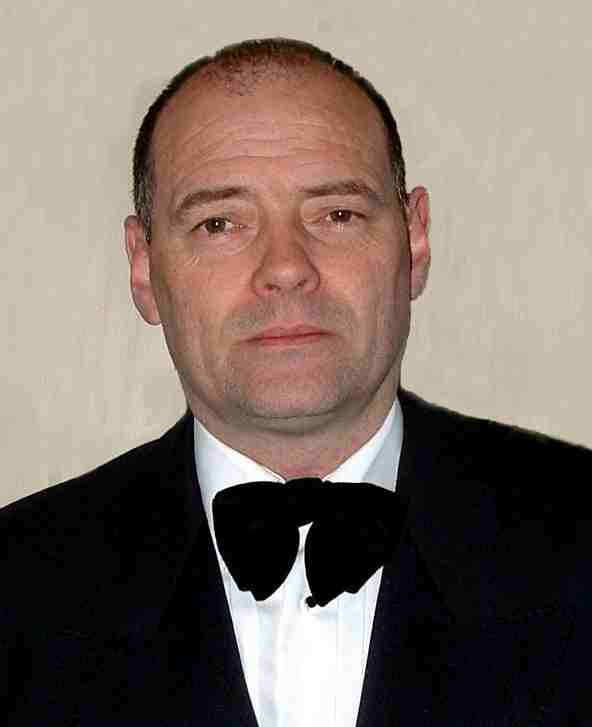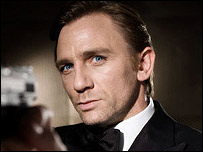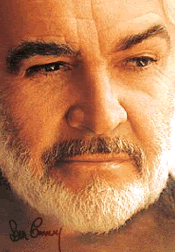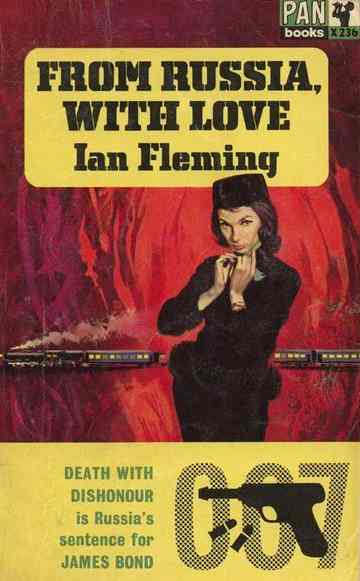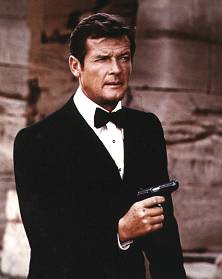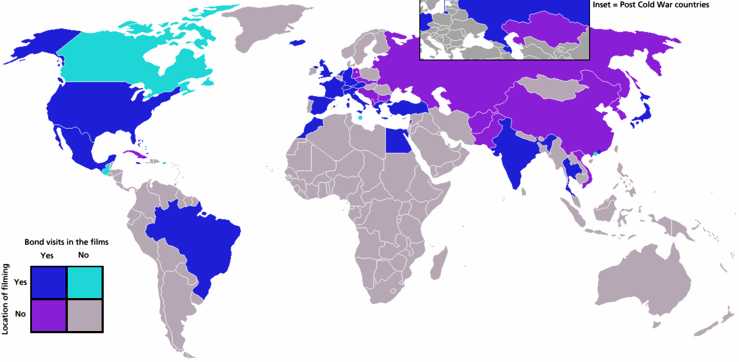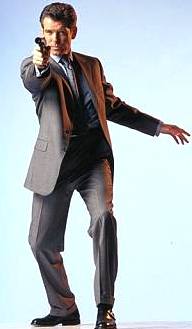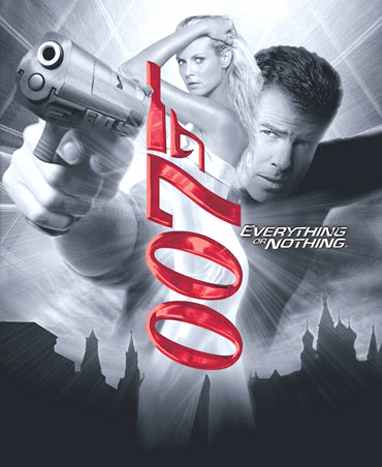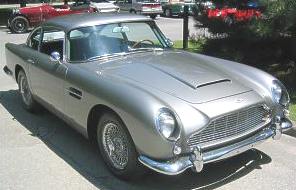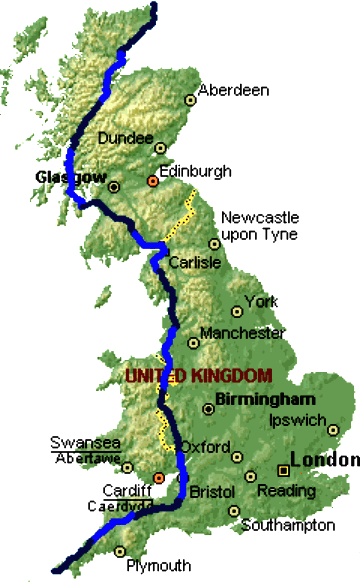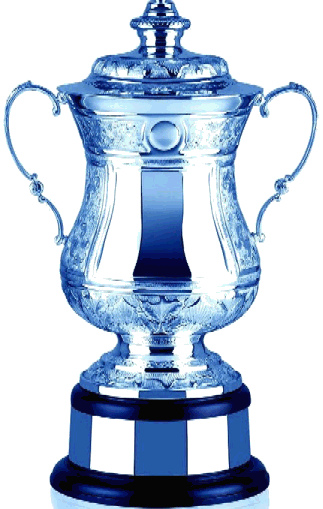|
JAMES
BOND
and IAN FLEMING
|
||||||||||||||||||||||||||||||||||||||||||||||||||||||||||||||||||||||||||||||||||||||||||||||||||||||||||||||||||||||||||||||||||||||||||||||||||||||||||||||||||||||||||||||||||||||||||||||||||||||||||||||||||||||||||||||||||||||||||||||||||||||||||||||||||||||||||||||||||||||||||||
|
HOME | AUTOMOTIVE | ELECTRIC CARS | FORMULA E | ENERGY | INSURANCE | INDEX | SOLAR CARS |
||||||||||||||||||||||||||||||||||||||||||||||||||||||||||||||||||||||||||||||||||||||||||||||||||||||||||||||||||||||||||||||||||||||||||||||||||||||||||||||||||||||||||||||||||||||||||||||||||||||||||||||||||||||||||||||||||||||||||||||||||||||||||||||||||||||||||||||||||||||||||||
|
My favourite Bond for many years was Sean Connery. Soon Roger Moore showed he had something else to offer with his tongue in cheek quips. Each time a film was released the production was that much more slick, which made every Bond movie a must see. Soon the hunt was on to replace Roger, when Timothy Dalton took the role in a new direction, more serious, but also entertaining. Finally, Pierce Brosnan was brought forward to bring back some of that Connery feel and added something else. Now, Daniel Craig is re-defining the genre, with a more earthy grass roots approach I think many will enjoy. Whatever you think of Daniel he's got a hard line-up to compete with.
Nelson - shaken not stirred
Ian Fleming created James Bond when he wrote the first draft of Casino Royale. Between 1952 and 1964 he developed the character into that we know today. As Fleming had worked with Naval Intelligence and the CIA, his stories were largely based on factual experiences and his own travel and evening entertainment.
The entire world has been watching James Bond movies for forty years. Albert R. "Cubby" Broccoli presented seventeen James Bond films from 1962-1995 and was the driving force behind the world's longest running film franchise in motion picture history. He knew what people wanted to see in Bond and made sure it was there. He was born in 1909 and died at his home in 1996 of a heart ailment after undergoing major heart surgery.
Broccoli began co-producing the Bond movies with Harry Saltzman in 1962 when they teamed up to make Dr. No. For those of you wondering why he shares his last name with a vegetable, it's because his ancestors in Italy were the first to cross the cauliflower with a rabe to produce 'broccoli.' Broccoli's production company, EON, (which stands for "Everything Or Nothing") is a subsidiary of Danjaq, but the death of Broccoli will have little impact since he has recently shared the workload with his wife and his stepson Michael Wilson. All Bond fans owe a tremendous amount of their hours of viewing pleasure to his talents, his expert guidance will be missed.
The last Bond movie benefited from et more advances in special effects. Die Another Day: The story begins in the demilitarized zone between North and South Korea with a spectacular high-speed hovercraft chase and continues via Hong Kong to Cuba and London where Bond meets up with the two ladies who are to play such important and differing roles in his quest to unmask a traitor and to prevent a war of catastrophic consequence. Hot on the trail of the principle villains, Bond travels to Iceland where he experiences at first hand the power of an amazing new weapon before a dramatic confrontation with his main adversary back in Korea where it all starts.
I'm sure you all join me in eager anticipation as we await the news of our next Bond release.
THE BOND FILES - Daniel Craig becomes the sixth holder of the licence to kill October 2005.
Daniel Craig as James Bond
His predecessors were:
SEAN
CONNERY
GEORGE
LAZENBY
ROGER
MOORE
TIMOTHY
DALTON
PIERCE
BROSNAN
HISTORY
James Bond 007, is a fictional British spy created by writer Ian Fleming in 1952. Fleming wrote numerous novels and short stories based upon the character and, after his death in 1964, further literary adventures were written by Kingsley Amis (pseudonym 'Robert Markham'), John Pearson, John Gardner, Raymond Benson, and Charlie Higson. In addition, Christopher Wood wrote two screenplay novelisations and other authors have also written various unofficial permutations of the character.
Although initially made famous through the novels, James Bond is now best known from the EON Productions film series. Twenty-one films have been made (as of 2006) as well as two that were independently produced and one American television adaptation of Fleming's first novel under legal licence. The EON films are generally referred to as the 'official' films (although its origin is unclear, this terminology is used throughout this article). Albert R. "Cubby" Broccoli and Harry Saltzman produced most of these up until 1975, when Broccoli became the sole producer. From 1995, his daughter, Barbara Broccoli, and his stepson, Michael G. Wilson, jointly continued production duties.
To date, six actors have portrayed James Bond in the official series. They are:
Sean Connery (1962–67; 1971) George Lazenby (1969), Roger Moore (1973–85), Timothy Dalton (1987–89), Pierce Brosnan (1995–2002), Daniel Craig (2006–present).
In addition and generally considered "unofficial", Barry Nelson portrayed Bond in an Americanised television episode adaptation of Casino Royale in 1954. Bob Holness portrayed James Bond in a South African radio adaptation of Moonraker in 1956. David Niven played the role of James Bond in a non-EON production of Casino Royale in 1967, and Connery reprised the character in another non-EON film, Never Say Never Again in 1983, an update of 1965's Thunderball, in which he also starred. The 1973 BBC documentary Omnibus: The British Hero featured Christopher Cazenove playing a number of such title characters, including James Bond in dramatised scenes from Goldfinger and Diamonds Are Forever.
The twenty-first official film, Casino Royale, with Daniel Craig as James Bond, premiered on 14 November 2006, with the film going on general release in Asia and the Middle East the following day.
Broccoli and Saltzman's family company, Danjaq, LLC, has owned the James Bond film series, through EON, since the start. It became co-owner with United Artists Corporation since the mid-1970s, when Saltzman sold UA his share of Danjaq. Currently, Columbia Pictures and MGM (United Artists' parent) co-distribute the franchise.
In addition to novels and films, Bond is a prominent character in many computer and video games, comic strips and comic books, and has been the subject of many parodies.
Sir Sean Connery
OverviewIan Fleming's creation and inspiration
Commander James Bond, CMG, RNVR is an agent of the British Secret Intelligence Service (SIS) (more commonly known as MI6). He was created in February 1952 by Ian Fleming while on holiday at his Jamaican estate called Goldeneye. The hero of Fleming's tale, James Bond, was named after an American ornithologist of the same name who was an expert on Caribbean birds and had written a definitive book on the subject: Birds of the West Indies. Fleming was inspired by a real spy - Dušan Popov, a Serb double agent for both the British and Germans, who was also known as a bit of a "playboy". Fleming, a keen birdwatcher, owned a copy of Bond's field guide at Goldeneye. Of the name, Fleming once said:
I wanted the simplest, dullest, plainest-sounding name I could find, James Bond was much better than something more interesting like 'Peregrine Maltravers.' Exotic things would happen to and around him but he would be a neutral figure — an anonymous blunt instrument wielded by a Government Department.
After completing the manuscript for what would later be titled Casino Royale, Fleming allowed his friend William Plomer, a poet and later Fleming's editor, to read it. Plomer liked it enough that he gave the manuscript to Jonathan Cape, who did not like it as much, but published it anyway in 1953 due to the fact that Ian was the younger brother of Peter Fleming, an established travel writer who also put in a good word for Ian.
Since the fictional James Bond's creation, hundreds of reports by various news outlets have suggested names for Ian Fleming's inspiration of Bond. Usually these people have a background of some kind in espionage or other covert operations. Although some names share similarities with Bond, none has ever been confirmed by Fleming, Ian Fleming Publications or any of Ian Fleming's biographers such as Fleming's assistant and friend, John Pearson. James Bond may have had its origin in Toronto, Ontario. British Naval Intelligence Commander Ian Fleming was invited by Sir William Stephenson, codename Intrepid, to observe and participate in the SOE subversive warfare training Syllabus at STS-103. Fleming had a private residence located on Avenue Road in Toronto, Canada because the camp was full. On Avenue Road, there is the St. James Bond United Church and the address of the military building was 1107 Avenue Road (Double ones 0 and 7 thus the number 007). The building no longer exists, but where it once stood is Marshall McLuhan Catholic Secondary School. Ironically Marshall McLuhan CSS was built by Bondfield Construction and completed in 2001. Most researchers agree that James Bond is a highly romanticised version of Fleming himself; the author was known for his jet-setting lifestyle and reputation as a womaniser. Both, for the most part, went to the same schools, like the same foods (e.g., scrambled eggs), have the same habits (e.g., drinking and smoking), share the same view on women (e.g., how they should look and how they should dress), and have similar education and military careers both rising to the rank of Commander. Although the character of Bond is not known to be based on anyone but Fleming himself, the look of James Bond, famed for being "suave and sophisticated", is based on a young Hoagy Carmichael. In Casino Royale the character Vesper Lynd says of Bond, "He reminds me rather of Hoagy Carmichael, but there is something cold and ruthless." Other characteristics of Bond's look are said to be based on Fleming, such as his height, his hairstyle and his eye colour.
Fleming has, however, admitted to being inspired by true or partially-true events that took place during his career at the Naval Intelligence Division of the Admiralty. Most notably, and the basis for Casino Royale, was a trip to Lisbon that Fleming and the Director of Naval Intelligence, Admiral Godfrey, took during World War II en route to the United States. While there they went to the Estoril Casino in Estoril, which, due to the neutral status of Portugal had a number of spies of warring regimes present. Fleming claimed that while there he was cleaned out by a "chief German agent" at a table playing Chemin de Fer; however, Admiral Godfrey tells a different story, that Fleming only played Portuguese businessmen and that afterwards Ian had fantasised about them being German agents and the excitement of cleaning them out.
The franchise
The James Bond franchise is currently the second all-time highest grossing film franchise in history, after Star Wars, and one of the longest running film series in history, spanning 21 official films, 2 unofficial films, 1 TV episode based on Casino Royale, and a cartoon television series spin-off. Casino Royale, the twenty-first film was released on 15 November 2006 with a follow-up film currently using the working title Bond 22 that will be released on 7 November 2008.
Every Bond film has been a box office success to a lesser or greater extent. They continue to earn substantial profits after their theatrical run via videotape, DVD, and television broadcasts; in the UK, Bond holds three of the top five spots of the most-watched television movies.
The first actor to play Bond on-screen was American Barry Nelson in the 1954 CBS television production of Casino Royale in which the character became a U.S. agent named "Jimmy Bond". In 1956, Bob Holness provided the voice of Bond in a South African radio adaptation of Fleming's third novel, Moonraker.
Harry Saltzman and Albert R. Broccoli started the official cinematic run of Bond in 1962, with Dr. No starring Sean Connery. The films made by their production company, EON Productions are regarded as the "official films" by all parties, although the 3 "unofficial" adaptations were authorised.
The official series had set up a semi-regular schedule of releases: initially annually, then usually once every two years, although there have been a couple of times where the gap was larger, usually due to external events.
From Russia with Love is the novel credited with sparking the James Bond craze when it was listed as one of John F. Kennedy's favourite books
Since Bond's peak of popularity in 1965, with the release of Thunderball, critics have often predicted that his successful run would come to an end, usually believing that the films were out of touch with the times. After the release of On Her Majesty's Secret Service, George Lazenby quit the lead role for this very reason, even though he was offered a seven-film contract. By the 1980s, some critics had grown tired of the series, commenting that the perennial sexism and glamorous locales had become outdated, and that Bond's smooth, unruffled exterior did not mesh with competing movies like Die Hard. The hard-edge of Timothy Dalton in the Bond films of the late 1980s met a mixed response from moviegoers: some welcomed the earthier style reminiscent of Fleming's character, while others missed the light-hearted approach which characterised the Roger Moore era. While Dalton's final outing, Licence to Kill (1989), was financially successful, it did not prove as popular as previous installments. Its relative failure is usually blamed on a poor promotional campaign in the United States, Dalton's darker portrayal of Bond, and its status as the first Bond film to be rated PG-13 in the US and "15" in the UK. Regardless, a new Bond film was scheduled for release in 1991. However, legal wrangling over ownership of the character led to a protracted delay that would keep Bond off movie screens for the next six years, during which time Dalton had moved on.
The 1990s saw a revival and renewal of the series beginning with GoldenEye in 1995. Pierce Brosnan filled 007's shoes with a mix of Sean Connery cool and Roger Moore wit. The combination saw Bond's success return to a level it hadn't enjoyed since 1979's Moonraker. In all, Brosnan made four films before being replaced in 2006 by Daniel Craig, who will star in a reboot of the series. Although Craig's Casino Royale is the 21st film of the series, it will be Bond's first mission after obtaining his double-0 status from MI6.
The James Bond novels and films have ranged from realistic spy drama to science fiction. The original books by Fleming are usually dark — lacking fantasy or gadgets. Instead, they established the formula of unique villains, outlandish plots, and voluptuous women who tend to fall in love with Bond at first sight — the feeling often being mutual. The films expanded on Fleming's books, adding gadgets from Q Branch, death-defying stunts, and often abandoning the original plotlines for more outlandish and cinema-friendly adventures. The cinematic Bond adventures were initially influenced by earlier spy thrillers such as North by Northwest, Saboteur, and Journey Into Fear, but later entries became formulaic dramas where Bond saves the world from apocalyptic madmen. Inevitably, Bond's nemesis tries to kill him with a death-trap, during which the villain reveals vital information. Bond later escapes and uses this intelligence to thwart the evil plot. In many cases, Bond then kills his opponent himself, although early films often ended with the enemy either escaping or dying by someone else's hand.
Sir Roger Moore
Novels
In February 1952, Ian Fleming began work on his first James Bond novel. At the time, Fleming was the Foreign Manager for Kemsley Newspapers, an organisation owned by the London Sunday Times. Upon accepting the job, Fleming asked that he be allowed two months vacation per year. Between 1953 and his death in 1964, Fleming published 12 full-length novels and one short story collection (a second collection appeared after his death). Later, continuation novels were written by Kingsley Amis (as Robert Markham), John Gardner and Raymond Benson; the last of these books was published in 2002. In 2005 Young Bond, a new series of novels featuring the adventures of Bond as a teenager began, written by Charlie Higson.
Films - Eon Films
The James Bond film series from EON Productions has a number of its own traditions, many of which date back to the very first movie in 1962.
Since Dr. No, each film begins with what is known as the James Bond gun barrel sequence, which introduces Agent 007. Appearing to be filmed through a rifled gun barrel, as if from a bullet's perspective, the scene is a side-on view of Bond walking, then quickly turning and shooting. The scene then reddens (signifying the spilling of the would-be assassin's blood); the gun barrel dissolves to a white circle. In Dr. No, the circle then becomes part of the opening credits motif, while in From Russia with Love and Goldfinger, the circle shrinks and disappears and the opening scene simply appears. Since Thunderball, the circle has opened up to reveal the pre-title sequence of the film. This was altered slightly in Bond's 20th cinematic outing, Die Another Day. When Bond turns and shoots, a computer generated bullet from Bond's gun passes through the gun barrel. The sequence then continues as usual. The long-standing tradition was broken in Casino Royale when the film began with a cold open and integrated the sequence into the scene's action.
Pierce Brosnan as James Bond in the gun barrel sequence
After this introduction, every film (with the exception of Dr. No) would start with a pre-credits teaser, also popularly known as the "opening gambit". Usually the scene features 007 finishing up a previous mission before taking on the case from the film, and does not always relate to his main objective. Some of the teasers tie in with the plot (as in Live and Let Die). Since The Spy Who Loved Me in 1977, they have often involved attention-grabbing action sequences, which have tended to become larger and more elaborate with each film. The World Is Not Enough (1999) holds the record for the longest, running more than 15 minutes, whereas most run about seven to ten minutes.
After the teaser sequence, the opening credits begin, during which an arty display of scantily clad and even (discreetly) naked females can be seen doing a variety of activities from dancing, jumping on off-screen trampolines, to shooting weapons. (Or in the case of Live and Let Die, having their heads explode) This title sequence is a trademark and a staple of the series. The best known of the Bond title designers is Maurice Binder, who created them for fourteen films from 1962 to 1989. Since Binder's death in 1991, Daniel Kleinman has designed the credits and has introduced CG elements not present during his predecessor's era. While the credits run, the main theme of the film is usually sung by a popular artist of the time. Until GoldenEye, which featured motifs such as a two headed 'Janus' figure, the backdrop was unrelated to the plot of the film, although the design may reflect an overall theme (e.g., You Only Live Twice uses a Japanese motif as well as images of a volcano, both of which are elements of the movie itself). Goldfinger uses short glimpses of the film projected onto women's bodies, and On Her Majesty's Secret Service uses clips from all of the five preceding films shown running through an hourglass. For Your Eyes Only begins with Sheena Easton singing the title song on-screen. Die Another Day's titles are unusual in that the images advance the storyline by depicting Bond's torture following his capture by the North Koreans. The credits for GoldenEye depict the fall of the Soviet Union and thus provide a transition from the pre-fall era of the opening sequence to the post-fall setting of the rest of the narrative, which is set nine years later. The Bond films are unusual in retaining full opening and closing credits: since the late 1990s it has become common for most blockbuster films to save detailed credits for the end, with only the title shown at the beginning.
Countries James Bond visited in the films
Agent 007's famous introduction, "Bond, James Bond", became a catchphrase after it was first uttered (with a cigarette in the corner of his mouth) by Sean Connery in Dr. No. Since then, the phrase has entered the lexicon of Western popular culture as the epitome of polished, understated machismo. On June 21, 2005 it was honoured as the 22nd greatest quotation in cinema history by the American Film Institute as part of their 100 Years Series. Bond's customary beverage order, "Vodka martini. Shaken, not stirred", which was first uttered by him in Goldfinger (although it is actually first said on screen by the villain in Dr. No, and referenced even earlier in the same film), was also honoured as #90 on the same list.
Every film, except Dr. No (1962) and Thunderball (1965), has the line: "James Bond will return..." or "James Bond will be back" during or after the final credits. Up until Octopussy (1983), the end-credit line would also name the next title to be produced ("James Bond will return in..."). Over the years, the sequel has been incorrectly named three times. The first, 1964's Goldfinger, announced in early prints that Bond would return in On Her Majesty's Secret Service. However, the producers changed their mind shortly after release and subsequently corrected future editions of the film. In 1977, The Spy Who Loved Me stated that 007 would be back in For Your Eyes Only, but EON Productions decided to instead take advantage of the Star Wars craze and release Moonraker, whose plot was changed to involve outer space (unlike Goldfinger, however, EON chose not to correct the credits of The Spy Who Loved Me, so the error remains). Thirdly, Octopussy incorrectly states the next film as being From a View to a Kill, the original literary title of A View to a Kill. In the most recent Bond films, the title of the next film has been omitted, saying simply 'James Bond will return'. The liner-notes of a 'Best of Bond' music compilation CD stated that this was because the early films all used titles from Fleming's novels; having outpaced the novels with the current Bond films, the abbreviated form is used instead.
Every aficionado has a favourite Bond: Sean Connery — the tough guy, his machismo ready beneath the polished persona; George Lazenby — the controversial ultra-macho man, equally loved and despised; Roger Moore — the sophisticate, a perfect gentleman, rarely mussing his hair while saving the world; Timothy Dalton — the hard-edged literarily-authentic character; and Pierce Brosnan — the polished man of action. Every actor who auditions for the Bond role must always perform a scene from From Russia With Love, where he hears a noise and investigates, only to discover a beautiful stranger on his bed.
There is also lively debate on the best Bond movie, with most major film critics giving the top mark to either From Russia with Love (Connery's favourite, as he re-asserted in a 2002 ABC interview with Sam Donaldson) or its brassy follow-up, Goldfinger. Despite George Lazenby's short tenure in the tuxedo, some reviewers have also warmed to On Her Majesty's Secret Service — Leonard Maltin's TV Movies (a.k.a. Leonard Maltin’s Movie & Video Guide) review book states it might have been the best Bond film ever had Connery appeared in it; Raymond Benson concurs in The James Bond Bedside Companion.
Non-Eon Films
In 1954, CBS paid Ian Fleming $1,000 USD for the rights to adapt Casino Royale into a one hour television adventure as part of their Climax! series. The episode featured American Barry Nelson in the role of "Jimmy Bond", an agent for the fictional "Combined Intelligence" agency. The rights to Casino Royale were subsequently sold to producer Charles K. Feldman who turned Fleming's first novel into a spoof featuring actor David Niven as one of six James Bonds. The instrumental theme music was a hit for Herb Alpert and the Tijuana Brass. For more information, see the history of Casino Royale.
When plans for a James Bond film were scrapped in the late 1950s, a story treatment entitled Thunderball, written by Ian Fleming, Kevin McClory and Jack Whittingham, was adapted as Fleming's ninth Bond novel. Initially the book was only credited to Fleming. McClory filed a lawsuit that would eventually award him the film rights to the title in 1963. Afterwards, he made a deal with EON Productions to produce a film adaptation starring Sean Connery. The deal specifically stated that McClory couldn't produce another adaptation until a set period of time had elapsed, and he did so in 1983 with Never Say Never Again, which featured Sean Connery for a seventh time as 007. Since it was not made by Broccoli's production company, EON Productions, it is therefore not considered a part of the official film series. A second attempt by McClory to remake Thunderball in the 1990s with Sony Pictures was halted by legal action which resulted in the studio abandoning its aspirations for a rival James Bond series. To this day, McClory claims to own the film rights to Thunderball, though MGM and EON assert they have expired. For more in-depth information.
James Bond's influence on movies and television
James Bond has long been a household name and remains a huge influence within the spy genre. The Austin Powers series by writer and actor Mike Myers and other parodies such as Johnny English (2003), the "Flint" series starring James Coburn as Derek Flint, and Casino Royale (1967) are testaments to Bond's prominence in popular culture.
1960s TV imitations of James Bond such as I Spy, Get Smart, The Wild Wild West, and The Man from U.N.C.L.E. went on to become popular successes in their own right, the latter having enjoyed contributions by Fleming towards its creation: the show's lead character, "Napoleon Solo", was named after a character in Fleming's novel Goldfinger; Fleming also suggested the character name April Dancer, which was later used in the spin-off series The Girl from U.N.C.L.E. A reunion television movie, The Return of the Man from U.N.C.L.E. (1983), is notable for featuring a cameo by George Lazenby as James Bond in tribute to Fleming (for legal reasons, the character was credited as "JB").
A story line in The Beverly Hillbillies has Jethro (Max Baer, Jr.) forsaking his lifelong ambition to become a brain surgeon in favour of "double-naught spy". He outfits the Clampetts' truck with various Q-inspired gadgetry, none of which work according to plan.
In an apparent homage to the 'James Bond will return in...' credits, each of the season-ending episodes to date in the new (2005-present) series of Doctor Who has featured the ending credit, 'Doctor Who will return in...' followed by the title of the episode to be broadcast after the interim between series (in each case, a Christmas special).
Pierce Brosnan as James Bond
Music
"The James Bond Theme" was written by Monty Norman and was first orchestrated by the John Barry Orchestra for 1962's Dr. No, although the actual authorship of the music has been a matter of controversy for many years. However, in 2001, Norman won £30,000 in libel damages from the British paper The Sunday Times which suggested that Barry was entirely responsible for the composition.
Barry did go on to compose the scores for eleven Bond films in addition to his uncredited contribution to Dr. No, and is credited with the creation of "007", which was used as an alternate Bond theme in several films, and the popular orchestrated theme "On Her Majesty's Secret Service". Both "The James Bond Theme" and "On Her Majesty's Secret Service" have been remixed a number of times by popular artists, including Art of Noise, Moby, Paul Oakenfold, and the Propellerheads. The British/Australian string quartet also named bond (name purposely in lower case) recorded their own version of the theme, entitled "Bond on Bond".
Barry's legacy was followed by David Arnold, in addition to other well-known composers and record producers such as George Martin, Bill Conti, Michael Kamen, Marvin Hamlisch, and Eric Serra. Arnold is the series' current composer of choice, and was recently signed to compose the score for his fifth consecutive Bond film, Casino Royale.
The Bond films are known for their theme songs heard during the title credits, sung by well-known popular singers (which have included Tina Turner, Paul McCartney and Wings, Tom Jones, Carly Simon, Madonna, and Duran Duran, among many others.) Shirley Bassey performed three themes in total, and is the only singer to have been associated with more than one film. On Her Majesty's Secret Service is the only Bond film with a solely instrumental theme, though Louis Armstrong's ballad "We Have All the Time in the World", which serves as Bond and his wife Tracy's love song and whose title is Bond's last line in the film, is considered the unofficial theme. The main theme for Dr. No is the "James Bond Theme", although the opening credits also include an untitled bongo interlude, and concludes with a vocal Calypso-flavoured rendition of "Three Blind Mice" entitled "Kingston Calypso" that sets the scene. From Russia with Love also opens with an instrumental version over the title credits (which then segues into the "James Bond Theme"), but Matt Monro's vocal version also appears twice in the film, including the closing credits; the Monro version is generally considered the film's main theme, even though it doesn't appear during the opening credits. The only singer, to date, to appear within the titles is Sheena Easton, who sang the theme for For Your Eyes Only. The only singer of a title song to appear within the film itself as a character, to date, is Madonna, who appeared (uncredited) as a fencing instructor, Verity, as well as contributing the theme for Die Another Day. Chris Cornell performs "You Know My Name" in Casino Royale. He is the first male lead vocalist to perform a 007 song since A-Ha in 1987 for "The Living Daylights". This is also the first Bond theme song since 1983's Octopussy to use a different title than the film. Although many of the theme songs were successful hits, the only theme song to hit #1 in the U.S. was Duran Duran's "A View To A Kill" which hit the top of the Billboard HOT 100 chart in 1985.
Everything or Nothing was Pierce Brosnan's final appearance as James Bond
Video games
In 1983, the first Bond video game, developed and published by Parker Brothers, was released for the Atari 2600, the Atari 5200, the Atari 800, the Commodore 64, and the Colecovision. Since then, there have been numerous video games either based on the films or using original storylines.
Bond video games, however, didn't reach their popular stride until 1997's GoldenEye 007 by Rare for the Nintendo 64. Subsequently, virtually every Bond video game has attempted to copy GoldenEye 007's accomplishment and features to varying degrees of success even going so far as to have a game entitled GoldenEye: Rogue Agent that had nothing to do with either the video game GoldenEye or the film of the same name, and Bond himself plays only a minor role in which he is "killed" in the beginning during a 'virtual reality' mission, which served as a tutorial for the game.
Since acquiring the licence in 1999, Electronic Arts has released 8 games, 5 of which have original stories (i.e., not based on a film) including the popular Everything or Nothing, which broke away from the first-person shooter trend that started with GoldenEye 007 and went to a third-person perspective. It was also the first game to feature well known actors including Willem Dafoe, Heidi Klum and Pierce Brosnan as James Bond, although several previous games have used Brosnan's likeness as Bond. In 2005, Electronic Arts released another game in the same vein as Everything or Nothing, this time a video game adaptation of From Russia with Love, which allowed the player to play as Bond with the likeness of Sean Connery. This was the second game based on a Connery Bond film (the first was a 1980s text adventure adaptation of Goldfinger) and the first to use the actor's likeness as agent 007. Connery himself recorded new voiceovers for the game, the first time the actor played Bond in 22 years.
In 2006 Activision secured the license to make Bond-related games, currently shared with EA. The deal will become exclusive in September 2007.
Comic strips and comic books
In 1957 the Daily Express, a newspaper owned by Lord Beaverbrook, approached Ian Fleming to adapt his stories into comic strips. After initial reluctance by Fleming who felt the strips would lack the quality of his writing, agreed and the first strip Casino Royale was published in 1958. Since then many illustrated adventures of James Bond have been published, including every Ian Fleming novel as well as Kingsley Amis's Colonel Sun, and most of Fleming's short stories. Later, the comic strip produced original stories, continuing until 1983.
Titan Books is presently reprinting these comic strips in an ongoing series of graphic novel-style collections; by the end of 2005 it had completed reprinting all Fleming-based adaptations as well as Colonel Sun and had moved on to reprinting original stories.
Several comic book adaptations of the James Bond films have been published through the years, as well as numerous original stories.
Bond characters
The James Bond series of novels and films have a plethora of interesting allies and villains. Bond's superiors and other officers of the British Secret Service are generally known by letters, such as M and Q. In the novels (but not in the films), Bond has had two secretaries, Loelia Ponsonby and Mary Goodnight, who in the films typically have their roles and lines transferred to M's secretary, Miss Moneypenny. Occasionally Bond is assigned to work a case with his good friend, Felix Leiter of the CIA. In the films, Leiter appeared regularly during the Connery era, only once during Moore's tenure, and in both Dalton films; however, he was only played by the same actor twice. Absent from the Brosnan era of films, Felix returned in Craig's first James Bond film Casino Royale in 2006.
Bond's women, particularly in the films, often have double entendre names, leading to coy jokes, for example, "Pussy Galore" in Goldfinger (a name invented by Fleming), "Plenty O'Toole" in Diamonds Are Forever, and "Xenia Onatopp" (a villainess sexually excited by strangling men with her thighs) in GoldenEye.
Throughout both the novels and the films there have only been a handful of recurring characters. Some of the more memorable ones include Bill Tanner, Rene Mathis, Felix Leiter, Jack Wade, Jaws and recently Charles Robinson.
Aston Martin DB5 probably the most famous Bond car
Vehicles and gadgets
Exotic espionage equipment and vehicles are very popular elements of James Bond's literary and cinematic missions; these items often prove critically important to Bond removing obstacles to the success of his missions.
Fleming's novels and early screen adaptations presented minimal equipment such as From Russia with Love's booby-trapped attaché case; in Dr. No, Bond's sole gadgets were a Geiger counter and a wristwatch with a luminous (and radioactive) face. The gadgets, however, assumed a higher, spectacular profile in the 1964 film Goldfinger; its success encouraged further espionage equipment from Q Branch to be supplied to 007. Some films, in the opinion of many critics and fans, have had excessive amounts of gadgets or extremely outlandish gadgets and vehicles, specifically 1979's science fiction-oriented Moonraker and 2002's Die Another Day in which Bond's Aston Martin could become invisible due to a technology Q refers to as adaptive camouflage. Since Moonraker subsequent productions struggled with balancing gadget content against the story's capacities, without implying a technology-dependent man, to mixed results.
Bond's most famous car is the silver grey Aston Martin DB5 seen in Goldfinger, Thunderball, GoldenEye, Tomorrow Never Dies and Casino Royale. Although the films used a number of different Aston Martin DB5s on film and for publicity one of them was sold in January 2006 at an auction in Arizona for $2,090,000 (USD) to an unnamed European collector. That specific car was originally sold for £5,000 in 1970.
In Fleming's books, Bond had a penchant for "battleship grey" Bentleys, while Gardner awarded the agent a modified Saab 900 Turbo nicknamed the Silver Beast and later a Bentley Mulsanne Turbo.
Bond's weapon of choice in the beginning of "Dr. No" is a Beretta 0.25 calibre, also called "Lilliput", which was then replaced by the German made Walther PPK. The PPK was used until the ending of "Tomorrow Never Dies" when Bond required extra fire power and upgraded to the Walther P99. He used the pistol in "The World Is Not Enough" and "Die Another Day," and continued to use it in Casino Royale.
Trivia
Lands End to John o'Groats Cannonball ZEV Run
LINKS and REFERENCE
Stars out for Bond royal premiere. BBC. Casino Royale - Worldwide release dates. Sony Pictures. Chancellor, Henry (2005). James Bond: The Man and His World. John Murray. ISBN 0-7195-6815-3. James Bond the second highest grossing film franchise of all time. Most Lucrative Movie Franchises. "Bond. James Bond" 22nd greatest line in cinema history. AFI's 100 Years… 100 Movie Quotes. Wise, Damon, Martin Campell, Daniel Craig. "No More Mr Nice Spy", Empire, 2006-10-27, pp. 76. Monty Norman sues for libel. Bond theme writer wins damages. Aston Martin DB5 auction. James Bond car sold for over £1m. General references Benson, Raymond (1984). The James Bond Bedside Companion. Dodd, Mead. ISBN 1-4011-0284-0. Chapman, James (1999). Licence To Thrill: A Cultural History Of The James Bond Films. I.B. Tauris. ISBN 1-86064-387-6. Cork, John (2002). James Bond: The Legacy. Boxtree/Macmillan. ISBN 0-8109-3296-2. Lindner, Christoph (2003). The James Bond Phenomenon: A Critical Reader. Manchester University Press. ISBN 0-7190-6541-0. Winder, Simon (2006). The Man Who Saved Britain. Picador. ISBN 0-330-43954-5. Charlie Higson interview with CommanderBond.net. The Charlie Higson CBn Interview. Bond franchise Box Office numbers [2], Casino Royale Box Office numbers (1967), Box Office numbers + Inflation Inside Camp X by Lynn Philip Hodgson, with a foreword by Secret Agent 'Andy Durovecz (2003) - ISBN 0-9687062-0-7 Directories Referencio - "James Bond" Wiki directory Open Directory Project - "James Bond" Volunteer directory Yahoo Directory - "James Bond Series" Official sites Sony Pictures Casino Royale (Bond 21) Site Ian Fleming Publications Official Website James Bond 007 Ultimate DVD Collection Official Website Fan sites Universal Exports - The Home of James Bond, 007 - one of the oldest and most in-depth Bond sites online Bondpedia - the James Bond encyclopedia. Wiki-based James Bond encyclopedia. Double-Oh-Wiki - a wiki resource with information about the James Bond books, movies and games. Golden
guy Casino Royale is next Bond movie Crash writer 'takes on Bond film' Quiz: Test your Bond knowledge Fans and critics react to new Bond
NEW JAMES BOND STORY - James Bond and the Solar Navigator
UK VEHICLE INSURANCE ONLINE A - Z
No matter what car, van or bike you drive, we're all looking for great value and quality in our UK motor insurance? But who is the best - who is the cheapest and who offers the great service in the event of a claim?
See the insurance companies below who claim to offer competitive cover at sensible prices, our guide to the jargon and tips for cutting your quote - Good Luck:-
Shopping for car insurance (often referred to as ‘motor insurance’) has traditionally been a painstaking but necessary task. From fully comp to third party, finding the right deal from numerous UK car insurance companies can prove to be an overwhelming challenge using a telephone. However, there’s more to a search than just finding cheap car insurance. You need to ensure you get the cover to suit your needs as a motorist. We recommend you see our Insurance Guide before applying for any insurance.
A - Z DIRECTORY of MOTOR MANUFACTURERS
BlueBird Word Cup Trophy
|
||||||||||||||||||||||||||||||||||||||||||||||||||||||||||||||||||||||||||||||||||||||||||||||||||||||||||||||||||||||||||||||||||||||||||||||||||||||||||||||||||||||||||||||||||||||||||||||||||||||||||||||||||||||||||||||||||||||||||||||||||||||||||||||||||||||||||||||||||||||||||||
|
BLUEPLANET BE3 ELECTRIC | EDUCATION | ELECTRIC CYCLES | SOLARNAVIGATOR |
||||||||||||||||||||||||||||||||||||||||||||||||||||||||||||||||||||||||||||||||||||||||||||||||||||||||||||||||||||||||||||||||||||||||||||||||||||||||||||||||||||||||||||||||||||||||||||||||||||||||||||||||||||||||||||||||||||||||||||||||||||||||||||||||||||||||||||||||||||||||||||
|
The
content of this website is copyright © 1991 and 2014 Electrick
Publications. All rights reserved. The bluebird logo |
||||||||||||||||||||||||||||||||||||||||||||||||||||||||||||||||||||||||||||||||||||||||||||||||||||||||||||||||||||||||||||||||||||||||||||||||||||||||||||||||||||||||||||||||||||||||||||||||||||||||||||||||||||||||||||||||||||||||||||||||||||||||||||||||||||||||||||||||||||||||||||
